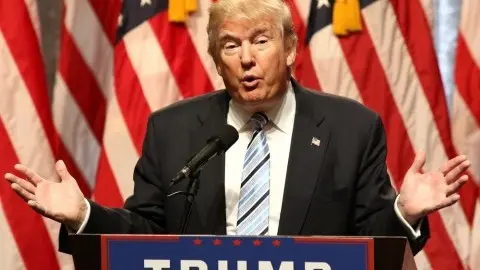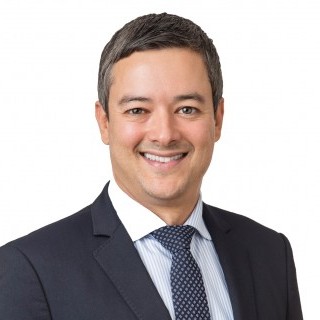Expect more voter volatility ahead of Brazil’s presidential election
Latest opinion polls suggest Brazilian voter intentions have been remarkably steady in recent months. That could change given the high level of undecided voters, the start of TV ad campaigns and a court decision regarding the candidacy of the jailed former president 'Lula'
Alckmin has secured his position as a competitive candidate
The biggest change in local market sentiment towards the Brazilian election over the past month has been a more constructive assessment regarding the ability of the establishment candidate, Geraldo Alckmin, to win the race, following the consolidation of a broad party alliance network.
Alckmin was indeed the biggest winner of the party negotiations
Alckmin was indeed the biggest winner of the party negotiations, followed by the jailed former president, Luiz Inácio 'Lula' da Silva's PT party, which was able to unify part of the left with the withdrawal of Manuela D’Ávila’s candidacy. Ciro Gomes was the biggest loser, as the candidate failed to seal any significant alliances, despite intense negotiations with both the left, which he lost to the PT, and the centre, which he lost to Alckmin. Marina Silva and Jair Bolsonaro seem more comfortable with their isolation, actively deploying it to solidify their status as outsider/anti-establishment candidates.
As a result of the negotiated party alliances, Alckmin’s campaign will amass 44% of the total airtime for presidential candidates in the state-sponsored TV/radio campaign that starts on August 31. The PT candidate will receive about 20% of the dedicated airtime, followed by Henrique Meirelles (15%) while the remaining candidates all get 5% or less, as we show in the chart below

Party alliances accentuated the asymmetry of campaign resource distribution. In particular, as the chart above demonstrates, the fact that leading contenders are the ones with the fewest resources increases the likelihood of bigger changes in voter support after August 31, greatly complicating the assessment of the electoral outlook.
Investors will be expecting Alckmin materially to improve his poll numbers throughout September. TV is still the most important way to reach the electorate in Brazil, despite the rise of social media. We agree that the greater exposure gives Alckmin a much-improved chance to move on to the second round but, in our opinion, this won't be enough to catapult him to certain victory.
A strong anti-establishment sentiment
The candidate’s association with the political establishment, which deepened with the alliances that closely mirror President Temer's support base, suggests that Alckmin is vulnerable to deeply felt voter dissatisfaction with the political class and strong anti-establishment sentiment. His troubling performance in his home state where, despite his good reputation and name-recognition, Bolsonaro appears to maintain a narrow lead also raises questions about his viability in this electoral cycle.
As seen in Colombia and Mexico this year, anti-establishment sentiment was a much more potent driver for election results than traditional resource advantages, which perhaps also lost their effectiveness due to the rise of social media.
PT insists on Lula, but gets ready for Haddad
Another important development over the past month was the confirmation that the PT party will insist on Lula’s candidacy, which should help maximize the party’s media exposure. The local consensus is that there’s a negligible chance the courts will allow the jailed former-President to run. A decision by the courts is expected at some time between the end of the month and the September 17 deadline.
Voter support for Lula remains quite high
In that case, the PT is expected to replace Lula with Fernando Haddad, the current VP candidate in the ticket. Manuela D’Ávila (PC do B) would be added to the ticket as VP candidate.
Voter support for Lula remains quite high, at about 35%, while support for Haddad is quite low (2-4% range). As a result, the PT’s main goal should be securing a high level of transfer of voter support from Lula to Haddad. This may not necessarily be a trivial task because Haddad is little known, and Lula is unlikely to be able to record videos or give interviews in support of Haddad, while the use of his image in Haddad’s campaign may also be restricted.
The uncertainties surrounding this transfer, which presumably would happen very late in the campaign cycle, throughout the second half of September (Election Day is October 7), is another critical source of uncertainty vis-à-vis the outcome of the elections.
Fractured electoral landscape suggests low bar for a first-round win
As the polls released this week indicated, the campaign still lacks an undisputed leader, with no candidate (other than Lula) with more than 20% support, while a large part of the electorate (more than a third) remains undecided about their vote. The fragmentation of voter support is perhaps the chief characteristic of the current electoral process.
That fragmentation should rise ahead, further complicating the assessment of the electoral outlook. Three factors should contribute to that:
- as mentioned above, the leading contenders in the race are the ones with the least resources, and presumably, with more room to fall
- the PT's expected attempt to transfer voter support from Lula to Haddad
- the profile of the undecided voters, with a larger proportion of centrist/liberal women, appears to be more aligned with Alckmin and Marina, to the detriment of Bolsonaro and the PT
These three factors suggest that September should be marked by greater swings in the polls. In particular, even tough local political analysts remain deeply divided in their assessments about the final electoral results, it is widely expected that:
- greater exposure should increase Alckmin’s support levels materially
- greater exposure and the confirmation of his candidacy should trigger a more dramatic rise in Haddad’s voter support,
- on the left, Haddad’s rise may come to the detriment of Marina Silva and Ciro Gomes, both of whom could lose support among Lula-loyalists
- in the centre, Alckmin’s rise may come to the detriment of Álvaro Dias
There’s much less clarity, in our opinion, about how these dynamics will affect Jair Bolsonaro, who should be able to offset his campaign resource disadvantages with the savvy use of social media, and the greater enthusiasm and loyalty typically associated with his supporters.
These developments suggest that the gap between the leading candidates should narrow during September, with four candidates (at least) likely remaining competitive until Election Day. As a result, the voter support needed to move to the second round is likely to be unusually small and the risk is that the election will be decided by razor-thin margins, severely complicating the assessment of who will be the next President.
The gap between leading candidates should narrow
We also question the popular view that the first-round will be won by a candidate from the left (Marina, Haddad or Gomes) and a candidate from the centre/right (Alckmin or Bolsonaro). Unlike previous electoral cycles that were dominated by a typical polarisation between the left and right, any combination of the five leading contenders seems plausible under certain circumstances.
Low conviction prevails and the odds remain very difficult to call but, for now, the local consensus is that the three candidates that appear to have the strongest chances of moving on to the second round are: Alckmin (due to the greater TV exposure), Haddad (due to Lula’s support) and Bolsonaro. Following yesterday's poll results (to be confirmed by a Datafolha poll expected to be released on Wednesday) the prevailing view is perhaps that Haddad and Bolsonaro have an edge over Alckmin.
Silva and Gomes also have potential but are seen as less likely to make the cut. Silva could surprise, however, by attracting a bigger share of undecided voters given her broad-range appeal, especially if Haddad’s candidacy fails to gain traction. Gomes’ situation is more precarious, given that he has been so weakened by party negotiations that the growing consensus is that his chances of moving to the second round have already been fatally compromised.
Near-term political catalysts for the BRL
Polls are likely to be the main domestic drivers for local assets going forward. The chief market assumption is that Alckmin will rise in polls once the TV/radio ads start airing on August 31. But the longer it takes for the candidate to rise, the more anxious investors are likely to become.
As discussed above, we agree that Alckmin’s voter support should increase but we still find it unlikely that investor conviction about his victory will solidify. Our base-case assumption is that at least four candidates should remain competitive until October 7, keeping uncertainty elevated until the end.
Lack of clarity that an investor-friendly candidate will win should weigh on local assets, intensify demand for FX hedge and trigger a BRL selloff towards the 4-4.20 range during September/October.
The central bank still has much ammunition (at least about US$50bn) to intervene in FX markets and alter the BRL’s trajectory. After record-levels of intervention in June (when the CB sold US$37bn in FX swaps), the bank took advantage of the improved market environment in July and did not intervene, effectively saving some ammunition for later. As a result of intervention uncertainty, a more precise FX trajectory remains hard to predict.
Post-October 7 and before the second-round on October 28, local assets will react to the election result and second-round poll simulations. Any scenario in which Alckmin fails to move to the second round is bound to weigh on local assets. Bolsonaro’s economic agenda is pro-market, but the candidate is also seen as more vulnerable in second-round simulations while lingering questions about his conviction on his economic programme and his ability to execute it suggest greater caution.
This publication has been prepared by ING solely for information purposes irrespective of a particular user's means, financial situation or investment objectives. The information does not constitute investment recommendation, and nor is it investment, legal or tax advice or an offer or solicitation to purchase or sell any financial instrument. Read more
Download
Download article
21 August 2018
In case you missed it: De-throning the king This bundle contains 8 Articles